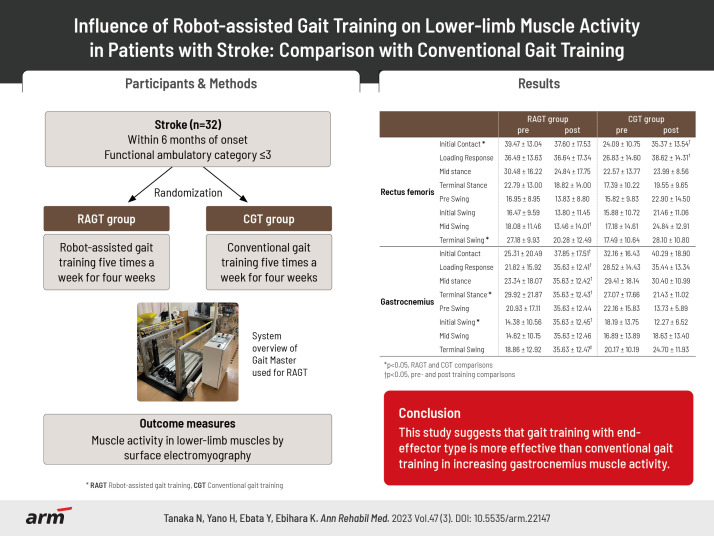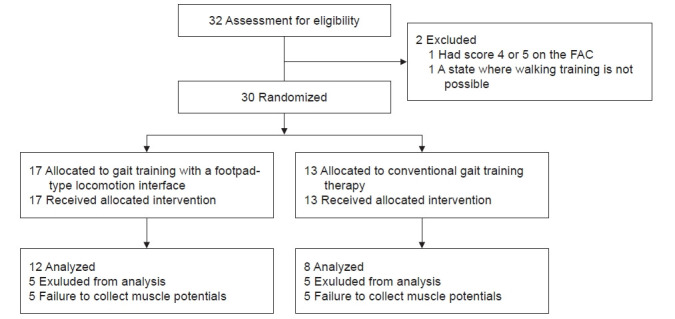Influence of Robot-Assisted Gait Training on Lower-Limb Muscle Activity in Patients With Stroke: Comparison With Conventional Gait Training.
IF 2.9
Q1 REHABILITATION
引用次数: 0
Abstract
Objective To measure muscle activity before and after robot-assisted gait training (RAGT) in patients with stroke and examine the differences in muscle activity changes compared with conventional gait training (CGT). Methods Thirty patients with stroke (RAGT group, n=17; CGT group, n=13) participated in the study. All patients underwent RAGT using a footpad locomotion interface or CGT for 20 minutes for a total of 20 sessions. Outcome measures were lower-limb muscle activity and gait speed. Measurements were performed before the start of the intervention and after the end of the 4-week intervention. Results The RAGT group showed increased muscle activity in the gastrocnemius, whereas the CGT group showed high muscle activity in the rectus femoris. In the terminal stance of the gait cycle, the gastrocnemius, the increase in muscle activity was significantly higher in the RAGT group than in the CGT group. Conclusion The results suggest that RAGT with end-effector type is more effective than CGT to increase the gastrocnemius muscle activity.


机器人辅助步态训练对脑卒中患者下肢肌肉活动的影响:与常规步态训练的比较
目的:测量脑卒中患者机器人辅助步态训练(RAGT)前后的肌肉活动,并分析其与常规步态训练(CGT)相比肌肉活动变化的差异。方法:30例脑卒中患者(RAGT组,n=17;CGT组(n=13)参与研究。所有患者均采用足垫运动界面或CGT进行RAGT,持续20分钟,共20次。结果测量下肢肌肉活动和步态速度。测量在干预开始前和4周干预结束后进行。结果:RAGT组腓肠肌肌肉活动增加,而CGT组股直肌肌肉活动增加。在步态周期的末端姿势,腓肠肌,RAGT组肌肉活动的增加明显高于CGT组。结论:末端执行器型RAGT比CGT更能提高腓肠肌活性。
本文章由计算机程序翻译,如有差异,请以英文原文为准。
求助全文
约1分钟内获得全文
求助全文
来源期刊

Annals of Rehabilitation Medicine-ARM
REHABILITATION-
CiteScore
2.50
自引率
7.70%
发文量
32
审稿时长
30 weeks
 求助内容:
求助内容: 应助结果提醒方式:
应助结果提醒方式:


